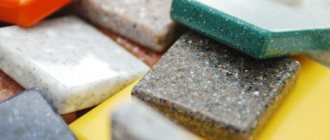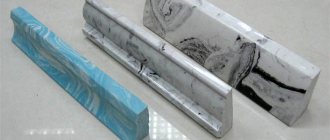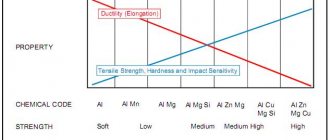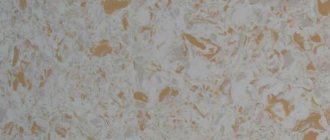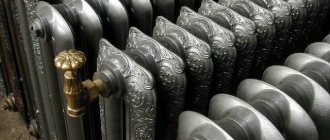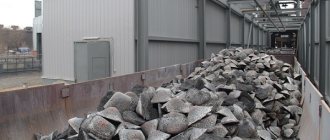Few materials have as many different uses as marble. This stone has a number of useful properties that make it indispensable in industry and art. It is easy to cut and polished with special tools; it has a unique aesthetics. Marble products are popular all over the world, among all segments of the population. This article talks about the origin of marble and its properties, the extraction and use of its varieties in many areas of life.
What is marble
Marble (translated from Greek as “shining”) is a crystalline rock formed as a result of metamorphic transformations of carbonates - limestone and dolomite. Metamorphisms occur under high pressure and high temperature, as a result of which marble has a granular structure and is easy to process. Marble is a valuable and rare material that is used in various fields - construction, art, architecture. Due to its crystalline structure, the stone has patterns formed by the iridescence of various shades depending on its origin.
Origin of marble
To understand how material is formed, you need to mentally look into the bowels of the earth. The remains of microorganisms that have existed on Earth for many millennia turn into limestone. It, in turn, under the pressure of enormous force due to the layers of rocks pressing on top and high temperature, crystallizes and turns into stone. Sometimes the process of marble origin involves dolomites, formed as a result of the action of potassium on groundwater. And only occasionally it is possible to encounter a rock formed by the mineral aragonite.
Marble is often confused with marbled limestone. The difference is that marble is completely recrystallized limestone. In appearance, it can be distinguished due to the much smaller number of fossils in its structure, since during the process of metamorphism they turn into crystals. Despite the incomplete crystallization process, marbled limestone is not much inferior in its parameters to pure marble.
Durability
Dolomite stone is hard and at the same time fragile. Strength and resistance to damage is achieved through the addition of a special resin-based binder material. Standard products feature a gelcoat surface that protects the vanity, tray or tub and provides the final appearance.
In order to meet the highest demands of customers, Marmite has invented an innovative material called Evermite, which ideally combines engineered elasticity and durability.
Evermite's patented technology was developed using a modified polymer. This makes the products more resistant to scratches, stains and the normal wear and tear associated with daily use compared to other gelcoat coated composite products. The unique formula of the components creates a protective barrier, minimizing the risk of damage by at least 20% compared to other analogues.
Natural origin
Cast marble is a natural, environmentally friendly material consisting of 70-75% crushed dolomite stone, which is formed over many years. The environmentally friendly production process, with zero CO2 emissions, minimizes the negative impact of production on the environment.
Modernity
Cast marble technology allows us to follow current trends and create various structures with a unique transmission of color and shine. The surface of the products always remains hygienic and safe for use, even in contact with water.
Tactile sensations are also of great importance for the daily ritual of use; the products have a pleasant natural structure and ambient temperature.
A large variety of technical and engineering solutions have made it possible to combine practicality, safety of use and modern product design into one whole.
Quality
In its technology, Marmite always ensures the quality of the components supplied and guarantees the highest quality of the finished product.
What is marble made of?
Many minerals can be found in the structure of marble, such as muscovite, quartz, biotite, tremolite, forsterite, talc and actinolite. But the main share is occupied by calcite and sometimes dolomite.
Based on the limestone content in the stone, it is divided into two groups:
- calcite: calcite within 90-99%, dolomite content up to 4%, minor impurities of other minerals are possible;
- silicate: calcite within 50%, dolomite content up to 35-40%, silica admixture up to 25%.
Most often, calcite crystals are large in size and visible to the naked eye. Less common are types of marble that have a finer crystalline structure - they are extremely popular in the field of sculptural art.
Chemical composition
In addition to the minerals found in an enviable variety in the composition of marble, there are also various chemical impurities. Iron oxide, phosphoric acid are more common in calcite stone. In silicate, a significant part is occupied by silicon dioxide and aluminum oxide. Depending on the origin of the rock, inclusions of pyrite, manganese, and limonite are not uncommon. Also found are bitumen, graphite, chloride, and iron sulfite. Chemical impurities determine the color of the noble stone, making it possible to form marble stone of the most bizarre shades.
Which is better – cast marble or artificial stone?
At its core, cast marble is an artificial stone; it just differs from the same quartz agglomerate in the composition of its mineral filler. To create acrylic stone, crumbs of different materials are taken: granite, quartz, onyx, marble, quartz, etc. When making artificial marble, up to 92% of the filler is marble chips mixed with quartz. It is thanks to her that it acquires its appearance and strength. Acrylic resins bond it tightly to create a uniform slab or molded product.
Properties of marble
Marble is hydrophobic, its water absorption coefficient is very low (in the range of 0.08-0.12%), due to which it can be used for finishing buildings, sculptures and premises in close contact with water. It is practically not afraid of temperature changes, and even exposure to high temperatures does not have a significant effect on the material - it is often used in the manufacture of fireplaces. Porosity is less than 1%, but despite this, marble is considered a “breathable” material that normalizes the indoor microclimate.
The density of marble varies between 1900-2900 kg/m3. It depends on the type of stone, the chemical composition and the content of various impurities in the material. Other characteristics of the material, such as the fracture and compressive strength of marble, also depend on the density. Fracture resistance of different types of stone varies from 10 to 30 MPa, and compression resistance - from 100 to 250 MPa.
The hardness of marble on the Mohs scale ranges from 3 to 4, which corresponds to a hard material. The material has a greater hardness than the minerals that form it, but less than igneous rocks (for comparison, granite has a Mohs hardness of about 8).
Other characteristics of marble:
- Thermal conductivity averages 2.8 W/(mK). This means that the stone almost does not conduct heat and is a heat-insulating material.
- Abrasion ranges from 0.4 to 3.2 g/cm2. A marble staircase will wear down by 0.02 mm per year.
- Radioactivity is zero. Marble, by its origin, does not contain radioactive isotopes (unlike granite).
The material is able to withstand significant static and dynamic loads. In terms of mechanical strength, it is more than 2 times superior to concrete, but marble is easy to scratch with a knife. If you break a slab, the fracture line will be loose, which makes it easier to polish the stone.
Advantages of cast marble
The material has a smooth surface with high antibacterial properties, which is why it is often used for furnishing rooms with high humidity: bathrooms, washrooms, and kitchens. Cast marble has no micropores and is impervious to chemical compounds, which makes it easier to care for products made from it.
The advantages of cast marble and products made from it are:
· low thermal conductivity: its surface is warm to the touch, due to which baths are often made from it;
· ability to withstand high loads, increased mechanical strength;
· large color palette;
· the ability to restore damaged surfaces at home if potholes or scratches appear;
· does not form microcracks when cutting or drilling;
· high degree of noise absorption;
· neutrality to aggressive chemicals;
· insulating properties;
· increased resistance to abrasion of the outer layer of cast marble products;
· high-quality smooth surface even with large product sizes;
· retains its properties and positive characteristics at a temperature range from -50 to +80 degrees;
· during the service life, the material and products made from it do not peel off or split.
Manufacturing technology and the composition of the starting materials allow the surface of cast products not to turn yellow, even when interacting with air and water, and also maintain a pure and unchanged original color for a long time. But after some time you will have to polish the marble.
Types of marble
Marble can be classified according to different parameters: structure, color, place of extraction. If we consider the internal structure of the stone, it can be:
- simple - obtained from pure calcite, has a uniform color;
- composite - if the structure contains talc and chlorite in sufficient quantities, then their layers alternate with layers of calcite;
- breccia - contains fragments of mineral rock cemented together by a marble mass;
- shell - consists of prehistoric fossils mixed with calcite.
Plain marble is mostly used in the field of sculptural art, while its various varieties are highly valued in architecture due to their extraordinary strength and unique structure. The purest breed has a bright white color, but is too rare.
Design
Cast marble allows you to expand the boundaries of product design, providing endless possibilities in the formation of various shapes and designs, even the most extraordinary design ideas that were previously impossible to bring to life.
Cast Marmite marble allows you to create different products up to 2,000 mm in length, with a minimum thickness of 13 mm and a corner radius of 2 mm. Such washbasins are ideal for furniture like no other, because the geometry of the washbasin is perfectly flat and smooth.
The material allows you to produce products of almost any color, or in a combination of several colors. The surface structure is matte, glossy and even textured, with imitation of natural cuts of wood, stone and other structures popular in design. These features of cast marble are unique and not offered by other manufacturers.
Marble color
Most often, stones with light shades are found - this is due to the low content of impurities in the material. But depending on the content of other minerals, the color can vary from light yellow to dark brown. Its properties also depend on the color of the marble. Therefore, stones of different colors are used for different purposes.
The most common marble colors are:
1. White. Minimum impurities, easy to process. Often used to create sculptures and in industry, white marble is crushed and added to dyes for building materials. Veins of other colors are often found, so pure marble is rare.
2. Black. The color indicates the predominance of bitumen and graphite in the composition. Rarely seen. It is used for decorative purposes, for cladding facades, and in the manufacture of monuments.
3. Red. The rarest type of stone. The composition contains iron oxide in large quantities - it is this that gives the red tint to the stone. It is valued for finishing furniture and cladding decorative elements. Easy to process.
4. Yellow and brown. May contain limonite, manganese, iron carbonate. Used for finishing fireplaces, columns, facades. Visually expands the room.
5. Green. Impurities of serpentine, chlorite, tremolite. It has a branched or wavy pattern. They decorate bathrooms and kitchens.
6. Blue and light blue. A pronounced color is rare. It contains an admixture of diopside and sometimes graphite. It is valued less than other species, as it is widespread. Most often it is a gray stone with bluish veins.
Description and scope of application
Cast marble is an environmentally friendly material, which is essentially a composition, the basis of which is approximately 85% natural marble chips or quartz sand. And the remaining 15% is a binding element, which is polyester or acrylic resin with various dyes, which give the material the desired and varied shades.
The surfaces of cast marble products are coated with a special protective layer called gelcoat, which increases their mechanical strength. Modern vibration casting technology allows you to create voluminous and expressive decorative and interior elements, regardless of their complexity.
Cast marble is used almost everywhere; it is used to create:
· paving slabs;
· all kinds of souvenirs;
· sinks, countertops, sinks, panels for bathrooms;
· window sills;
· facing elements: tiles, facade panels;
· parts of staircase structures: railings, steps, balustrades.
Thanks to casting technology, it is possible to produce products from artificial stone with a fairly complex artistic component.
Disadvantages of marble
The disadvantages of the material include its vulnerability when in contact with aggressive chemical environments. It reacts with hydrochloric acid, dissolving and releasing carbon dioxide. Therefore, it is recommended to use slightly alkaline products to care for marble. It is also not suitable for finishing floor coverings in crowded areas - in addition to the fact that the stone will wear out faster, it requires protection from dirt and dust. When decorating large areas with marble, it is necessary to take into account its heterogeneous structure and play of shades.
Rules for caring for cast marble
Surfaces covered with cast marble do not require any complex care. All you need to do is timely care and clean the products, and they will retain their well-groomed, beautiful appearance for a long time.
- It is worth wiping the product regularly with a soft cloth.
- If you need to use a cleaning agent, choose liquid products without abrasive particles.
- If the original shine is lost, the product must be polished to restore its former beauty.
- It is necessary to protect products made from cast marble from falling heavy objects. This can cause cracks and chips to form.
Where is marble mined?
Marble deposits are scattered throughout the world. The largest of them are located in Europe, Asia, Africa and America. The most famous are:
- Carrara field. Located in the Alps. The predominant color is milky white, sometimes with blue streaks. Stone mining here has been carried out since the second century BC. It was from it that the greatest creations of sculptural art of the Renaissance were embodied. Stone mining continues to this day.
- Sayanskoe. One of the largest deposits located in Russia. Color – white with pink and beige shades. In addition to the Sayan, there are several more deposits in the Urals with a predominance of stone of yellow, gray and black colors. They gained fame in the 18th century AD.
- Parian. Located in Greece. Perhaps the largest deposit of antiquity. Stone mining here has been going on since the seventh century BC. It was thanks to this deposit that majestic sculptures and structures of ancient times were erected. The color of the stone is predominantly yellow.
The material is also mined in Norway, Cuba, France, South Africa, and the Appalachians. Ukraine, Georgia, Armenia and Uzbekistan can also boast deposits of the precious stone.
What is marble made of?
The scope of application of the material is unusually wide. Thanks to its many types, stone is used in the fields of industry and art. Marble processing is not a very complicated process, and therefore the material has been in demand at all times. Modern usage is:
- cladding of building facades;
- internal use for finishing decorative elements;
- floor coverings;
- figurines, bas-reliefs;
- finishing of pools, fountains;
- jewelry - earrings, rings, bracelets;
- production of monuments;
- as a filler for building materials - whitewash, plasters, concrete.
Application of cast marble
Cast marble has become widespread due to its properties and cost. Not everyone can afford products made from natural stone, and cast marble helps create cheaper products that are absolutely not inferior in quality to products made from natural stone. As for the cost, cast marble is several times cheaper than natural stone.
Most often, cast marble is used to cover sanitary ware. – bathtubs, sinks, shower trays. The products turn out to be warm, and it is pleasant to stand on such a surface with bare feet. It is possible to create any shapes, sizes and colors. Kitchen sinks are also made from cast marble. This material is used to make countertops and window sills. The railings and steps made of cast marble look beautiful. Products made from this material can be used to decorate a garden plot - it is used to make fences for flower beds, decorate gazebos, and lay out paths. Benches and garden figures are made from it, and fountains are decorated. Decorative items are made from cast marble - figurines, boxes, photo frames, vases and much more. Cast marble is used to create elements of external decor - they decorate the facades of buildings.
Interesting facts about marble
There are more than 20 stone deposits in Russia, but mining is carried out from only eight. The lack of infrastructure in Siberia and the Urals means that stone extraction from many deposits is unprofitable. The cost of production and processing is too high.
The famous Taj Mahal, built in the 17th century, is considered to be an entirely marble structure. Even the towers and domes of the Taj Mahal are made of this noble stone. The fact that the Taj Mahal has still retained its majestic appearance speaks in favor of the strength and durability of marble.
Taj Mahal (India)
In ancient Rome, the material was used for statues of members of the imperial family. Bronze statues were made for celebrities.
In ancient Greece, marble was considered the stone of the goddess Aphrodite. It symbolized love and family. It was believed that it helps spouses establish peace and harmony in relationships and cool passions. To this day, many people attribute magical properties to the noble stone - it is believed that it helps with health problems.
In India, the material is still widespread. People believe that with its help they can drive away evil spirits and improve relationships with loved ones.
Cons of cast marble
Cast marble, having a wide list of positive characteristics, of course, also has some disadvantages.
- Firstly, not everyone is happy with the appearance of this coating. They say that cast marble looks and feels like plastic.
- Like any other material, be it natural or artificial, cast marble begins to crumble over time and cracks appear on the coating. But this is easy to fix, since this marble can be easily polished.
